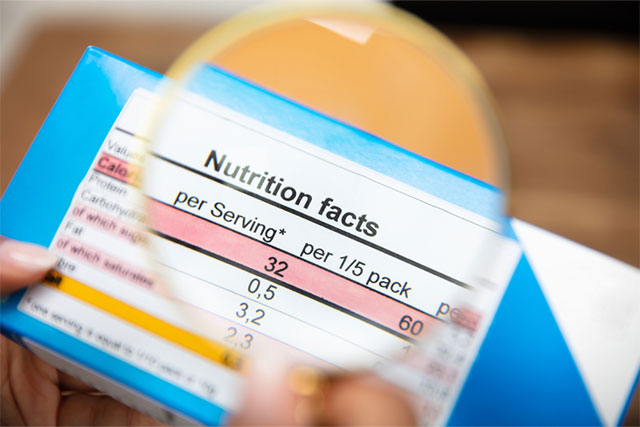
In many of my recent blogs I’ve explored new technologies that promise a step-change for safety, authenticity and overall efficiency in the food manufacturing industry.
Here, I’ll take a look at the current trends in the food and beverage industry that are driving the need for these innovations.
Current food manufacturing industry trends
1. Sustainability
In a world where consumers are becoming ever more ethically minded and businesses are having to adapt to meet aggressive targets for EU-wide greenhouse gas reduction, sustainability is arguably the number one factor amongst food and beverage market trends.
Corporate Social Responsibility (CSR) is a bigger consideration than ever for food businesses, and doing away with single-use plastics in particular is high on the agenda for many food giants.
Outside of packaging however, many companies are focusing on making the food itself greener by reducing waste by upcycling. This essentially means brands taking food waste from their factory lines and use it to create high-quality products out of surplus lines. You can learn more about this over at the Upcycled Food Association, and explore ten examples of upcycled food brands over at the blog My Ethical Choice.
Of course, upcycling isn’t the only way of brands being sustainable. Indoor vertical farming is also proving popular as it allows produce to be grown locally, indoors, all year round – saving brands significant money on shipping costs and turnaround time between crops. Indeed, you can get several times more crops in a year with this way of farming compared to traditional farming. Such is the boost to fresh food efficiency, vertical farming is one of those trends in food production that only looks set to increase in the coming years.
2. More health foods and associated packaging
One of the side effects of the Coronavirus pandemic was an increase in all things healthy, with exercise-at-home programs becoming the norm and demand for health foods skyrocketing. In general consumers are buying fresher, preparing bespoke meals more, and taking more time to look at the finer details of the ingredients going into their food.
Because of this, one of the standout new food industry trends is a shift to food with fewer and simpler ingredients, and labels that more clearly list that key nutritional information. Whether you’re talking vitamins, antioxidants, probiotics or prebiotics, consumers want this information at their fingertips and easily decipherable in seconds – necessitating a new approach from marketers, designers and food packaging companies alike.

3. Process innovation
Of course, with new foods come the need for more sophisticated production methods. That’s where new techniques like high-pressure processing (HPP) come in. One of the major market trends in food preservation, HPP is a low-temp, high-pressure pasteurisation technique that’s great for preventing bacterial contamination in things like juices and ice cream. However, HPP also carries its own challenges, including expensive equipment that can withstand the high pressures the process puts it under. Further innovation is therefore likely to be needed before such technology can be rolled out en masse across the industry.
4. An increase in automation
Another of the major trends in food production lies in automating factory processes to increase efficiencies at every stage of the picking and packing line.
In my post ‘Improving Efficiencies in your Food Production Business’ I looked at how bottlenecks in automated workflows can be remedied with the right software, leading to enormous cost savings across a business. My piece on end of line automation meanwhile went into greater depth on the benefits of automating at the end of the line, including the ability to better allocate labour, improve worker health, and improvements to factory productivity.
Wherever in your food processing plant you’re thinking of automating, picking the right automation partner is essential – which can be just where my extensive list of contacts comes in.
5. Supply chain problems increasing costs

Be it from the long-tail effect of Covid-19, fallout from the Russian-Ukraine conflict, or the effects of ever-escalating commodity costs on consumer behaviour, the UK food industry is currently encountering problems right across the supply chain. Indeed, in April the Federation of Bakers warned of a pending bread shortage, while May 2022 saw the first fall in UK food manufacturing output since July 2021.
One way food companies can help efficiencies across the supply chain is to employ IoT technologies that allow for smoother running in areas like transportation and stock tracking, while allowing agricultural warehouses to automate inventory management. This post over at Digi.com explains in more detail.
6. Improved quality of life for workers
Despite all the talk of automation, people are still central to the food industry. That’s why the last food and beverage market trend I’ll discuss here involves food businesses improving their working conditions to attract workers.
It’s a simple fact that food and beverage factories tend to be located in old, outdated, rurally-located buildings, often many miles from centres of commerce. Work in these locations is also often seasonal, with local areas often lacking enough basic housing to home a temporary workforce. Food brands should therefore look to not only improve break and leisure facilities at these sites, but also consider building dormitories or other private housing solutions if they’re to compete with other industries able to offer manual labour of a more consistent nature.
Looking to modernise a food or beverage business?
If you work in the industry and you’re dealing with any of the food and beverage market trends above, you’re likely already looking at ways to move your company forward.
I work with several companies who are investigating technologies that can help food brands build a more efficient, more sustainable future. Get in touch to find out how my connections and knowhow could help your business.
Further reading
- Improving Efficiencies in your Food Production Business
- The Importance of End of Line Automation in the Food Industry
- Food & Drink: Launching New Products in a Packed Marketplace
- 3D Stereo Microscopy: How it Could Change Your Food Business Forever
- Improving Operator Efficiency in Food Packing Halls
- The Importance of Food Compliance, Safety and Authenticity
